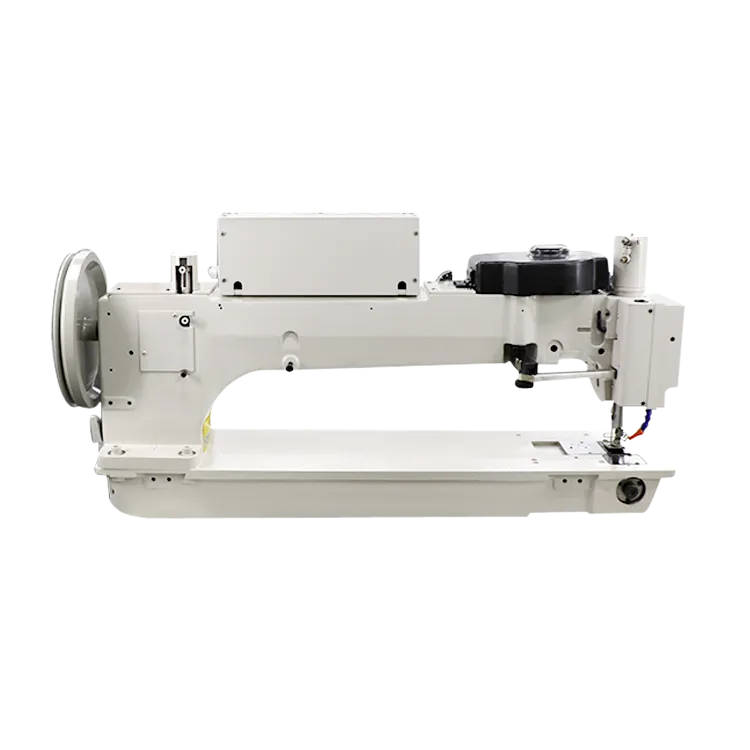lockstitch machine meaning
Understanding Lockstitch Machines Meaning and Importance
Lockstitch machines, a staple in the sewing industry, play a vital role in garment manufacturing and textile production. These machines are designed to create a particular type of stitch known as a lockstitch, which is formed by the interlocking of two threads the top thread, originating from the needle, and the bottom thread, coming from the bobbin. This innovative mechanism not only ensures strength and durability in the seams but also contributes to the aesthetic appeal of the finished products.
How Lockstitch Machines Work
At the heart of a lockstitch machine's operation is its mechanism that coordinates the movement of the needle and the bobbin. As the needle pierces the fabric, it pulls the top thread down into the material. Simultaneously, the bobbin thread is pulled up, interlocking with the top thread. This process creates a secure stitch that is resistant to unraveling. Adjustable tension settings allow users to customize stitches according to fabric type and thickness, offering versatility for different sewing projects.
Applications of Lockstitch Machines
Lockstitch machines are ubiquitous in the fashion and textile industries. They are particularly favored for their ability to produce flat seams, making them ideal for sewing woven and knit fabrics. The lockstitch's strength makes it suitable for high-stress seams found in items such as jeans, jackets, and other durable clothing. Additionally, these machines can be used for decorative stitching, enhancing the visual elements of garments.
Beyond apparel, lockstitch machines are also employed in home sewing, upholstery, and even quilting. Their reliability and ease of use have made them a popular choice among hobbyists and professionals alike. The availability of different models, ranging from manual to computerized versions, allows for a wide range of operations suitable for various skill levels and project needs.
lockstitch machine meaning

The Evolution of Lockstitch Machines
Since their introduction in the 19th century, lockstitch machines have undergone significant advancements. Early models were purely mechanical, requiring manual operation, but modern versions are equipped with computerized systems that automate many functions. These advancements have improved operational efficiency, increased stitch quality, and expanded the capabilities of lockstitch machines. For instance, digital controls allow for precise adjustments and customization of stitch length, width, and pattern, making it easier for users to achieve desired results.
Why Lockstitch Machines Matter
The significance of lockstitch machines cannot be overstated. They represent a blend of artistry and engineering, enabling the creation of high-quality textile products that meet consumer demands. Their ability to produce robust seams directly impacts the longevity of garments, contributing to sustainability in the fashion industry by reducing waste associated with defective seams.
Furthermore, in a world where fast fashion is prevalent, the reliability of lockstitch machines supports efficient production processes, allowing manufacturers to respond swiftly to market trends. This agility is essential in meeting the demands of a globalized economy where consumers seek both quality and affordability.
In conclusion, lockstitch machines are fundamental to the fabric of the sewing industry. Their unique stitch formation, versatility in application, and ongoing advancements make them an enduring choice for both industrial and home sewing. Understanding their mechanics and significance offers insight into the broader textile production landscape and highlights the importance of this technology in our daily lives. Whether you're a professional seamstress or a passionate hobbyist, the lockstitch machine remains an indispensable tool in the world of sewing.
-
Heavy Duty Leather Sewing Machine: A Must-Have for Professional LeatherworkNewsMay.28,2025
-
Leather Sewing Machine: Essential for High-Quality LeathercraftNewsMay.28,2025
-
Extra Heavy Duty Sewing Machine for Premium Leather ApplicationsNewsMay.28,2025
-
Walking Foot Cylinder Arm Sewing Machine: Precision and Power CombinedNewsMay.28,2025
-
Industrial Cylinder Arm Sewing Machine: Engineered for High-Performance StitchingNewsMay.28,2025
-
Cylinder Bed Sewing Machine: A Powerful Solution for Precision StitchingNewsMay.28,2025
-
Zigzag Sewing MachineNewsMay.12,2025





























